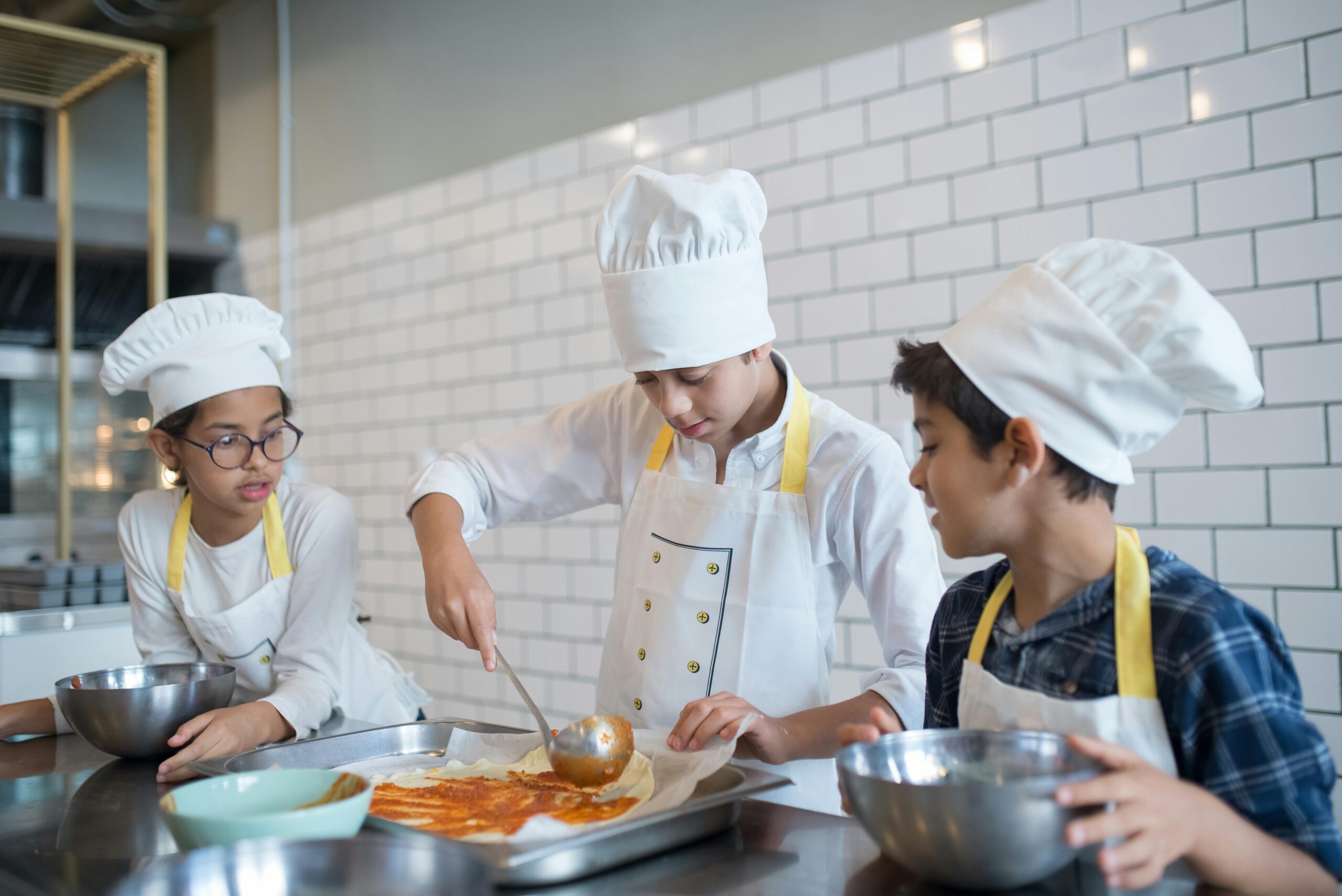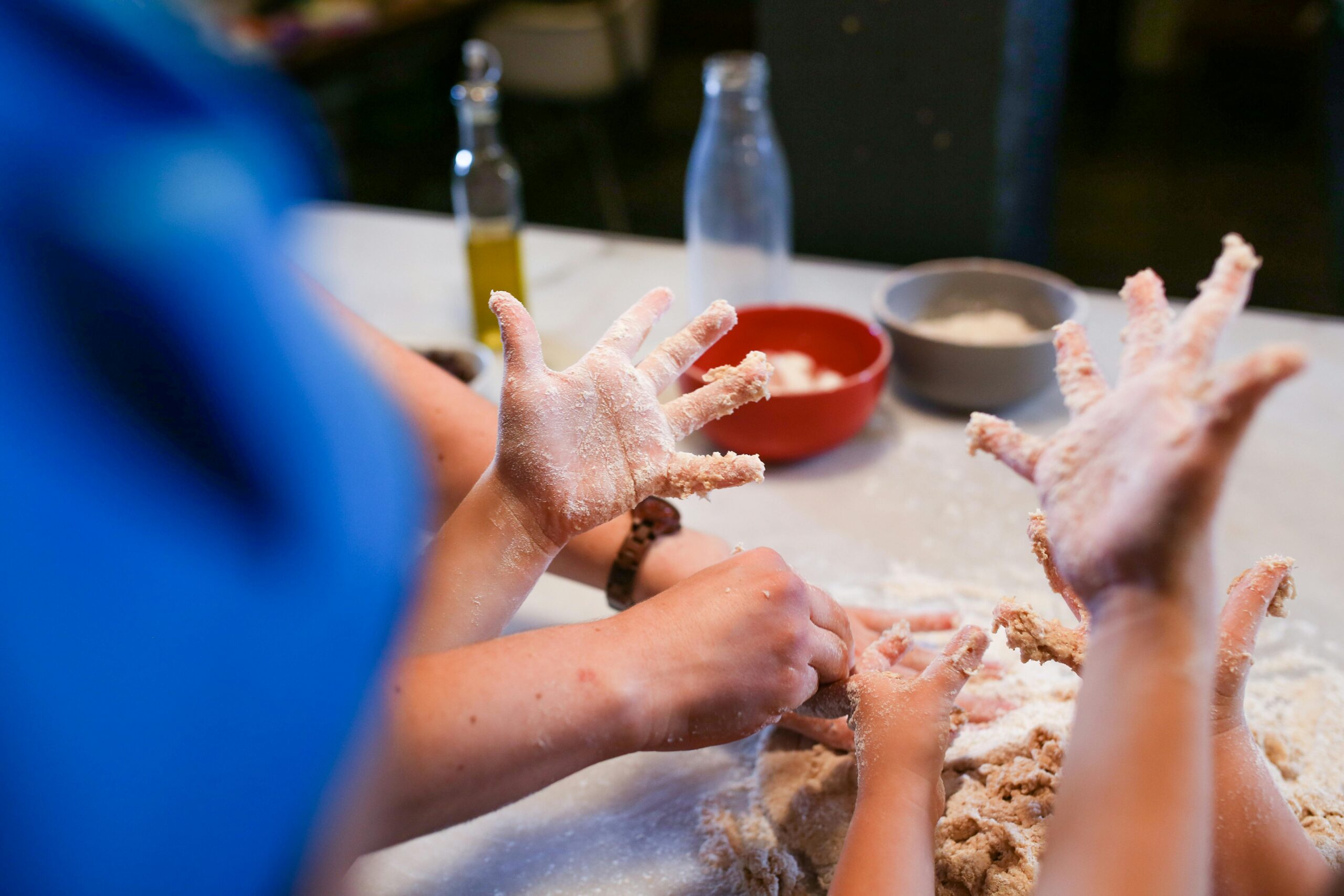The kitchen has always been the heart of our home. It’s where conversations flow, where messes are made, and where my kids have learned some of the most valuable lessons about life—through the simple act of cooking.Our kitchen is a space where flavors and rhythms come together to create unforgettable moments. Our kitchen — sometimes for cooking but mostly for dancing! It’s that part of our house where fun memories are made!
When my oldest child first asked to “help” with dinner, my immediate reaction was hesitation. What if they spilled something? What if they got hurt? But as I watched their face light up while stirring pancake batter for the first time, I realized how important it was to involve them in this part of our daily routine.
Over the years, I’ve learned that letting kids help in the kitchen isn’t just about teaching them to cook—it’s about equipping them with lifelong skills and creating meaningful memories.
The Short-Term Benefits of Kids in the Kitchen
1. Encourages Healthy Eating Habits: When kids help prepare a meal, they’re more likely to eat it—even the veggies! My picky eater suddenly became excited to try sauteed asparagus because they had “helped make them.”
2. Boosts Confidence: There’s a certain pride kids feel when they see the result of their work on the table. My son beamed the first time he flipped a pancake (with a little guidance, of course).
3. Improves Fine Motor Skills: Tasks like stirring, peeling, or cutting with kid-safe tools help young children develop their fine motor skills.
4. Encourages Family Bonding: Cooking together has created some of the best conversations in our home. There’s something about the shared effort in the kitchen that brings everyone closer.

The Long-Term Benefits of Teaching Kids to Cook
1. Life Skills They’ll Always Need: Cooking is an essential skill that every adult should know. By starting early, you’re setting your kids up for a lifetime of self-sufficiency.
2. Fosters Independence: As kids grow, they’ll need less help and supervision. Watching my 12-year-old confidently bake cookies from scratch without asking a single question showed me how far they’ve come.
3. Develops Patience and Problem-Solving Skills: Cooking isn’t always smooth sailing. Burnt toast, too-salty soups, or cookies that didn’t rise have taught my kids resilience and creativity in solving problems.
4. Strengthens Math, Science, and Reading Skills: Following recipes involves measuring, counting, and timing—all of which are valuable learning opportunities.
5.Involving kids in cooking is a great way to broaden their palates, teaching them about the incredible variety of flavors and spices that can elevate healthy eating.

How to Introduce Kids to the Kitchen Safely
1. Start Small: Toddlers can help rinse fruits, while preschoolers can mix batter or spread toppings.
2. Use Kid-Friendly Tools: Invest in child-safe knives, peelers, and smaller mixing bowls and food thongs. The excitement is immeasurable among small ones when you dress them up with apron and hat — cute but not necessary.
3. Teach Safety First: Explain the importance of staying away from sharp objects, hot surfaces, and electrical appliances.
4. Supervise, Don’t Hover: Give them freedom while staying close enough to step in if needed.

Why It’s Worth the Effort
Sure, letting kids help in the kitchen means extra mess and longer prep times. But the trade-off? The laughter, learning, and love that fills the room is priceless!
Kids who cook are more likely to explore new foods and embrace a variety of flavors, turning mealtime into an adventure rather than a chore. By being part of the cooking process, they feel a sense of ownership over the meals they create, making them more eager to try unfamiliar ingredients and healthier options. This early exposure not only broadens their palate but also helps establish lifelong habits of balanced, nutritious eating.
Now, as I watch my kids grow, I see the kitchen as more than a space for cooking—it’s a place where life lessons are taught, confidence is built, and family bonds are strengthened.
So, the next time your little one asks to “help,” say yes. Hand them a whisk, guide their tiny hands, and let them spill a little flour. Because one day, they’ll whip up a meal and remember these moments—not just for the food, but for the love they felt while making it.
Age-Appropriate Kitchen Tasks
Here’s a general guideline based on age groups:
-Toddlers (Ages 2–3): Washing fruits and vegetables, stirring batter, tearing lettuce leaves, or sprinkling toppings.
– Preschoolers (Ages 4–5): Measuring ingredients, spreading butter or jam, kneading dough, or assembling simple dishes like sandwiches.
– Early Elementary (Ages 6–7): Cracking eggs, using a hand mixer, peeling with a safe peeler, or rolling out dough.
– Older Elementary (Ages 8–10): Chopping with supervision, using the stove for simple tasks like scrambled eggs, and following easy recipes.
– Preteens (Ages 11–12): Preparing complete meals under supervision, baking, using the oven, or more complex knife work.
– Teens (13+): Cooking independently, meal planning, and experimenting with recipes.

Tips for Success
– Safety first: Teach proper use of utensils, stove, and appliances.
– Make it fun: Let kids pick recipes or be creative.
– Be patient: Mistakes are part of the learning process. Starting kids in the kitchen early fosters life skills, confidence, and an appreciation for healthy eating!
